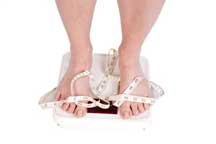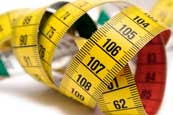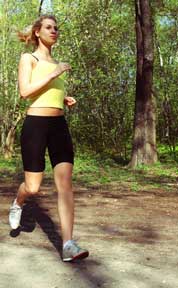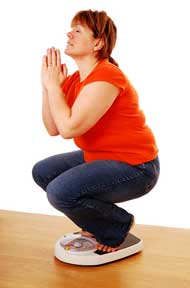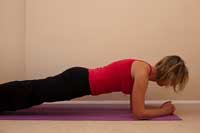
Here are a few tips on how to get it right:
The Modified Version For Beginners
The modified plank is a great way to build up to the full plank position. Start by balancing on your forearms and tops of your knees. Keep your body in a straight line from the crown of your head to your knees. Engage your abs by pulling in your tummy muscles.
If you’re a beginner, you might find it challenging enough just to hold this position. That's fine, just keep practising until you can hold it for 1 minute. Then you're ready to progress onto the real thing.
The Full Plank
Start as above, and then lift the knees off the floor resting just on your forearms and the balls of your feet. Look down towards the floor, and keep your feet hip-distance apart. Focus on pulling in your abdominal muscles while you hold the position. Don’t forget to breath!
If you feel a strain in your back, you’re either out of alignment or exhausted (or possibly both!). Either adjust your positioning or drop to the floor and rest.
Position is Paramount – No Arching or Sagging!
The plank is a simple exercise, but must be done right to be effective. If you’re out of alignment, you’ll either be making things too easy or could do yourself some serious damage. So whether you’re new to the plank or an old hand at it, it’s always beneficial to get someone to check your position.
Keep your back, hips and legs straight and tense your abdominal muscles. Don’t allow your hips to sag towards the floor, as this could lead to back problems, ultimately defeating the purpose of the exercise.
Also avoid sticking your bum in the air. This takes the challenge away from your core area, and really doesn’t look good!
In order for this exercise to be effective, you need to maintain a plank-like alignment, keeping as still as possible - although a certain amount of shaking is permitted.
If you reach the point where you can’t hold the position, or your back starts to hurt, then it’s time to drop to the floor and rest. It’s far better to hold a plank with good alignment for a short period of time, rather than holding a bad position for longer. As you progress, increase the duration of your hold.
Get Your Legs Involved
With your weight balanced evenly on the balls of both feet, push through your heels to work your legs and make your position stronger.
Straight Arms or Forearms?
There’s not a great deal of difference. The straight arm position works the shoulders and wrists more, whereas being on your forearms increases the intensity in the abs.
How It Works:
When you’re holding the plank position, gravity and the weight of your body will pull your middle towards the floor. You basically need to use your abs to hold the position still, and prevent an ungraceful belly-flop to the ground.
Put Yourself to the Test
As with all exercises, progression and variety are key to challenging your body, getting the most out of your workouts and keeping things interesting.
Start off by recording how long you can hold the position for. You should see an improvement over a couple of weeks.
Plank Progressions
Think the plank position is easy? If you’re not collapsing in a trembling mess on the floor after holding the plank (with good alignment!) for 1 minute, then you’re ready to attempt the more advanced stuff.
First hold the plank position for 1 minute, and then try out one or more of these variations:
1) Lift 1 leg off the floor for 10 secs, repeat on other side
2) Lift 1 arm off the floor for 10 secs, repeat on other side
3) Lift 1 leg up and out to the side for 10 secs, repeat on other side
4) Lift 1 arm up and out to the side for 10 secs, repeat on other side
5) Lift 1 arm and the opposite leg off the ground for 10 secs (make sure you keep the body level!), repeat on other side
When lifting your legs and arms off the floor avoid arching your back. Keep your pelvis level. You should feel your bum and shoulders working rather than a straining your back.
For something more dynamic, try the following moves:
1) Military plank: Start with straight arms, then lower yourself down, one arm at a time, onto your forearms/elbows. Then push back up to the starting position (straight arms), one arm at a time. Repeat 10 times then change your leading arm.
2) Plank walking: Get into the straight-armed plank position and, whilst maintaining good form, lift one arm at a time off the floor and slap your side. See how many slaps you can do, but avoid rocking the body from side to side.
Other variations include:
1) Side plank and reverse plank
2) Having the feet or arms on a gym ball or wobble board (or both!)
3) Walking up and down a step with the arms
4) Whilst holding the plank position for 1 minute, do a press up every 10 secs
You can create endless plank sequences to make your core workout more interesting. So get a watch, get down on the floor and give it a go!
Heather
Warning
Seek advice before performing these exercises, especially if you have any back, neck or abdominal issues, are suffering from any type of injury, are pregnant or have just given birth, or have high blood pressure or a heart condition.



